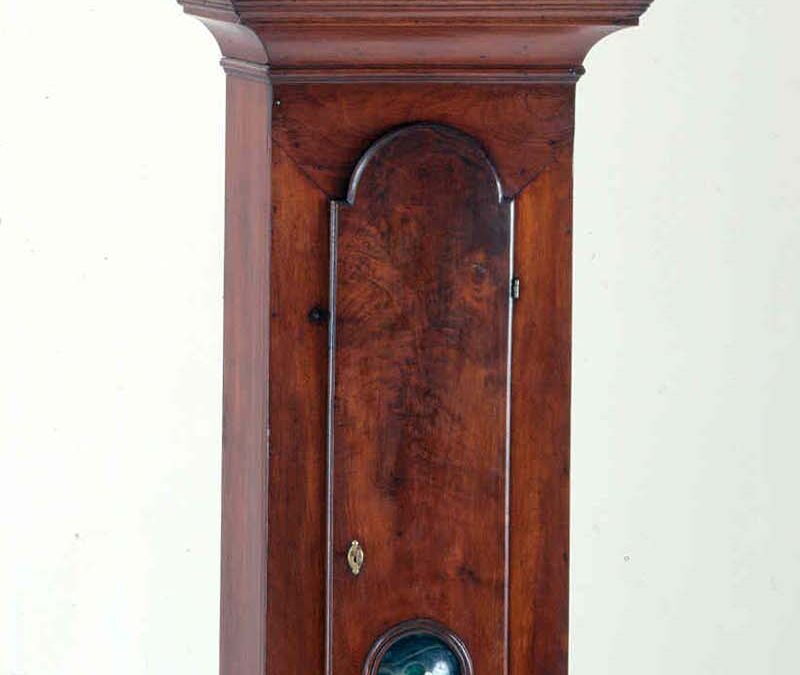Tall Clock

| Maker | George Crow |
| Date of Creation | 1740–62 |
| Location | Wilmington, Delaware |
| Materials | Brass works |
| Institution | Biggs Museum of American Art |
| Credit Line | Gift of the Estate of Sewell C. Biggs |
| Accession Number | 1992.76 |
| Photo Credit | Carson Zullinger |
One of the great survivals of early Delaware clockmaking, this tall clock combines an important early works with a finely constructed case. The eight-day movement and fully ornamented clockface with second hand and date ring are the work of George Crow, who worked in Wilmington by 1744. This clock sheds light on the field of clock-making in the region during the 18th century. George Crow was an atypical clockmaker: he appears to have made the cases which house his works. Typically, the works by a single clock maker were housed in cases made by a variety of cabinet makers. (Brocklebank, 1991) Crow held local offices between 1746 and 1758, advertised in 1752, and died in 1762. According to his estate inventory, he died with “3 unfinished Clocks” in the shop, a new clock in the garret, and “3 unfinished Clock cases & Joiners tools and sundries in ye loft,” indicating that he was still very much in business at the time of his death. His son, Thomas, also became a clockmaker and is represented in The Biggs’ collection. Quality of design and construction suggests the case was made in Philadelphia, a relatively easy trip by water. The stepped sarcophagus top, made of vigorously molded, single boards, is open in the back and affixed directly to the tops of the bonnet sides. Blind fret carving adorns the front frieze above the cornice moldings and the spandrels of the arch above the bonnet door. Arched moldings above the door carry around each side above the glazed windows, or “lights,” that show the brass works. Similarly, the bull’s-eye glass in the waist door shows the brass pendulum bob as it swings from side to side. Mitered mortise-and-tenon joints in the upper corners of the waist create a neat join of the top rail to the front stiles. The front and sides of the base, each made of two boards joined edge to edge, are also mitered in the corners. Inside, the sides of the waist extend almost to the floor. The clock stands on mitered base moldings applied to the front and side and undercut in front to create decoratively shaped bracket feet. There is no evidence that the case ever had bottom boards. The clock reportedly was owned by a ship-builder named Warner and descended through the family of Ziba Ferris, a Wilmington clock, watch, and furniture maker.

